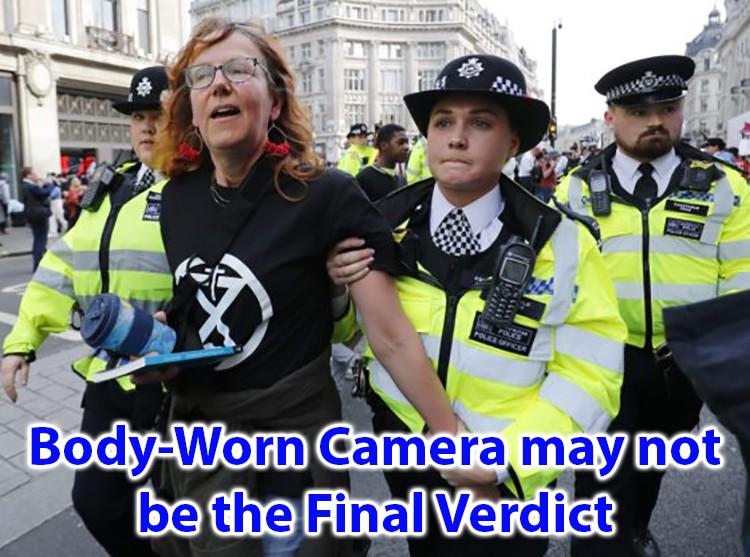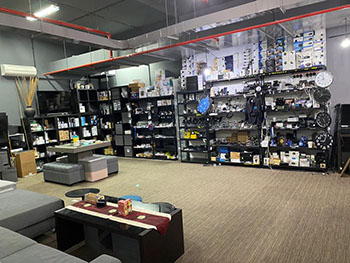Body-Worn Camera may Not be the Final Verdict
The idea is building that once every cop is equipped with a body camera, the controversy will be taken out of police shootings and other uses of force because “what really happened” will be captured on video for all to see. Body cameras are an increasingly necessary tool for transparency. But police departments still need to do more to improve transparency and accountability.
There’s no doubt that body cameras like dash cams, cell phone cams, and surveillance cams can provide a unique perspective on police encounters and, in most cases, are likely to help officers. But like those other devices, a camera mounted on your uniform or on your head has limitations that need to be understood and considered when evaluating the images, they record.
A camera doesn’t follow your eyes or see as they see
The camera does not follow the eyes of the wearer as the event occurs at the current level of development, a body camera is not an eye-tracker. That complex device can follow the movement of your eyes and superimpose on video small red circles that mark precisely where you are looking from one microsecond to the next.
A body camera photographs a broad scene but it can’t document where within that scene you are looking at any given instant. If you glance away from where the camera is concentrating, you may not see action within the camera frame that appears to be occurring ‘right before your eyes.’ There can be a huge disconnect between your field of view and the cameras. Later, someone reviewing what’s caught on camera and judging your actions could have a profoundly different sense of what happened then you had at the time it was occurring.
Camera speed differs from the speed of life
Because body cameras record at much higher speeds than a typical convenience store or correctional facility security cameras, it’s less likely that important details will be lost in the millisecond gaps between frames, as sometimes happens with those cruder devices. People who don’t understand the reactionary process won’t factor it in when viewing the footage. They’ll think the officer is keeping pace with the speed of the action as the camera records it. So, without knowledgeable input, they aren’t likely to understand how an officer can unintentionally end up placing rounds in a suspect’s back or firing additional shots after a threat has ended.
A camera may see better than you do in low light
The high-tech imaging of body cameras allows them to record with clarity in many low-light settings. When footage is screened later, it may actually be possible to see elements of the scene in sharper detail than you could at the time the camera was activated. On the other hand, cameras do not always deal well with lighting transitions. Going suddenly from bright to dim light or vice versa, a camera may briefly blank out images altogether.
Your body may block the view
How much of a scene a camera captures are highly dependent on where it’s positioned and where the action takes place. Depending on location and angle, a picture may be blocked by your own body parts, from your nose to your hands. Cameras are unable to capture a 360degree view of the situation that might be occurring. This thing cannot give us a true picture of the incident. If you’re firing a gun or a Taser, for example, a camera on your chest may not record much more than your extended arms and hands. Or just blading your stance may obscure the camera’s view. Critical moments within a scenario that you can see maybe missed entirely by your body cam because of these dynamics, ultimately masking what a reviewer may need to see to make a fair judgment.
A camera only records in 2-D
Because cameras don’t record depth of field the third dimension that’s perceived by the human eye accurately judging distances on their footage can be difficult. Depending on the lens involved, cameras may compress distances between objects or make them appear closer than they really are, without a proper sense of distance a reviewer may misinterpret the level of threat an officer was facing. There are technical means for determining distances on 2-D recordings but these are not commonly known or accessed by most investigators.
One camera may not be enough
The more cameras there are recording a force event, the more opportunities there are likely to be to clarify uncertainties. The angle, the ambient lighting, and other elements will almost certainly vary from one officer’s perspective to another’s, and syncing the footage up will provide broader information for understanding the dynamics of what happened. What looks like an egregious action from one angle may seem perfectly justified from another.
Think of the analysis of plays in a football game. In resolving close calls, referees want to view the action from as many cameras as possible to fully understand what they’re seeing. Ideally, officers deserve the same consideration. The problem is that many times there is only one camera involved, compared to a dozen that may be consulted in a sporting event, and in that case, the limitations must be kept even firmer in mind.
A camera can never replace a thorough investigation
When officers oppose wearing cameras, civilians sometimes assume they fear “transparency.” But more often they are concerned that camera recordings will be given undue, if not exclusive, weight in judging their actions. A camera’s recording should never be regarded only as of the Truth about a controversial incident. It needs to be weighed and tested against witness testimony, forensics, the involved officer’s statement, and other elements of a fair, thorough, and impartial investigation that takes human factors into consideration. The limitations of body cams and others need to be fully understood and evaluated to maximize their effectiveness and to assure that they are not regarded as infallible ‘magic bullets’ by people who do not fully grasp the realities of force dynamics.
Officers do not turn “on” camera
- A study of the New Orleans Police Department found nearly 100 incidents where police used force and were wearing body cameras but did not have them turned on.
- Last September, two Vermont police officers shot and killed a man while wearing body cameras. Neither officer turned them on before the shooting; both were cleared of all wrongdoing.
- Just before knocking a woman’s teeth out, two Daytona Beach, Florida, officers switched off their body cameras.
- In September, police in Washington, D.C., fatally shot Terrence Sterling, an unarmed 31-year-old black man, after his motorcycle crashed into their car. But contrary to District policy, none of the officers at the scene activated their cameras until after the shooting. The footage the city released captures Sterling’s final moments, but the video begins over a minute after shots were fired. The case is being investigated by the U.S. Attorney’s Office. Now, D.C. officers are required to confirm with dispatchers that they’ve switched on their body cameras when responding to calls or interacting with the public.
Who Sells Body-Worn Camera Technology
Many police departments use body-worn cameras made by Axon (formerly Taser), which provides free cameras and sells data storage services. Other vendors include Aventura, Black Mamba, BrickHouse Security, Brimtek, COBAN, Data911, DEI, Digital Ally, FlyWIRE, Global Justice, GoPro, HauteSpot, HD Protech, Kustom Signals, L-3 Mobile-Vision, Law Systems, Marantz Professional, Martel, Motorola, Panasonic, Patrol Eyes, Paul Conway, Pinnacle, PRG, Primal USA, Utility Inc., PRO-VISION, Reveal Media, Safety Innovations, Safety Vision, Titan, Utility, VIEVU, VP360, WatchGuard, WOLFCOM, Zepcam, and Zetronix.
In addition to selling body cameras, some vendors also provide data storage for the footage. For example, body-worn camera suppliers OMG law enforcement give internal storage and SD card, and owns the company http://omg-solutions.com/ .
Stephon Clark, an African-American man, was killed by Sacramento police in his grandmother’s backyard, people protest against police action. Police initially said they thought Clark was armed. But after the shooting, the officers found no weapon on Clark, only an iPhone. The city police chief responding quickly to the protests by giving bodycam footage in an attempt to help the public, without notice what really happened. But footage cannot solve the matter.
Conclusion
Outrage over high profile incidents and a shift in public opinion has led police departments around the world to equip more officers with cameras and add de-escalation training. But no local, state or federal lawmakers have banned police from using unnecessary deadly force. Rather, lawmakers at all levels still allow police the maximum latitude to use deadly force that constitutional law permits. Indeed, a comparison with police shows that this leniency goes too far to protect police at the price of civilian deaths.
References
Anon., n.d. EFF. [Online]
Available at: https://www.eff.org/pages/body-worn-cameras
[Accessed October 18, 2017].
Anon., Sep 23, 2014. Force Science Institute. [Online]
Available at: https://www.policeone.com/police-products/body-cameras/articles/10-limitations-of-body-cams-you-need-to-know-for-your-protection-Y0Lhpm3vlPTsJ9OZ/
Hardy S, B. L. R. P. C. S. W. P. P.-H. S., 2017. Mental Health in Family Medicine. [Online]
Available at: http://www.mhfmjournal.com/old/open-access/the-feasibility-of-using-body-worn-cameras-in-an-inpatient-mental-health-setting.pdf
Ketchell, M., January 18, 2016. THE CONVERSATION. [Online]
Available at: http://theconversation.com/u-s-laws-protect-police-while-endangering-civilians-52737
PASTERNACK, A., n.d. FAST CCOMPANY. [Online]
Available at: https://www.fastcompany.com/3062837/it-fell-off-body-camera-problems









